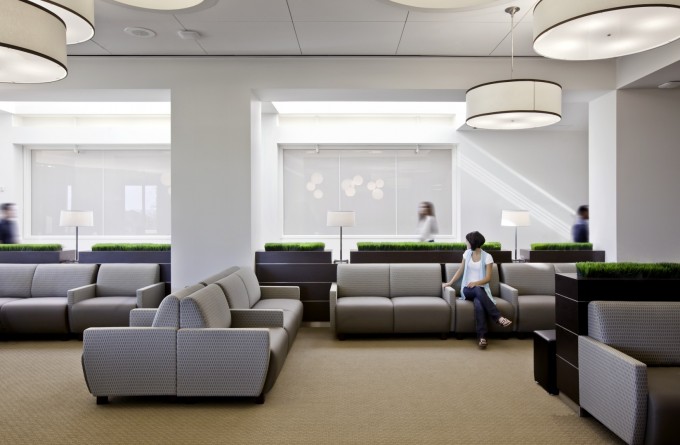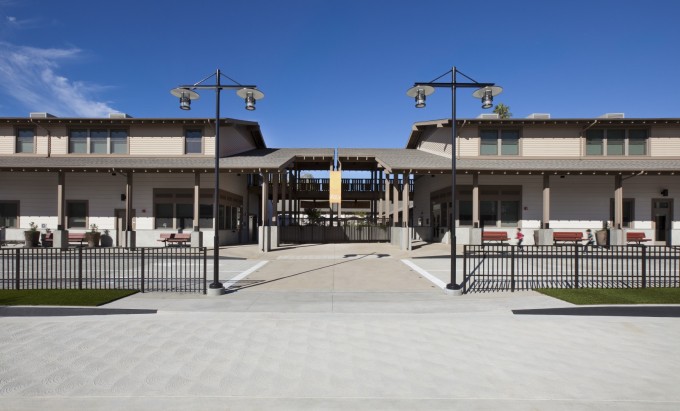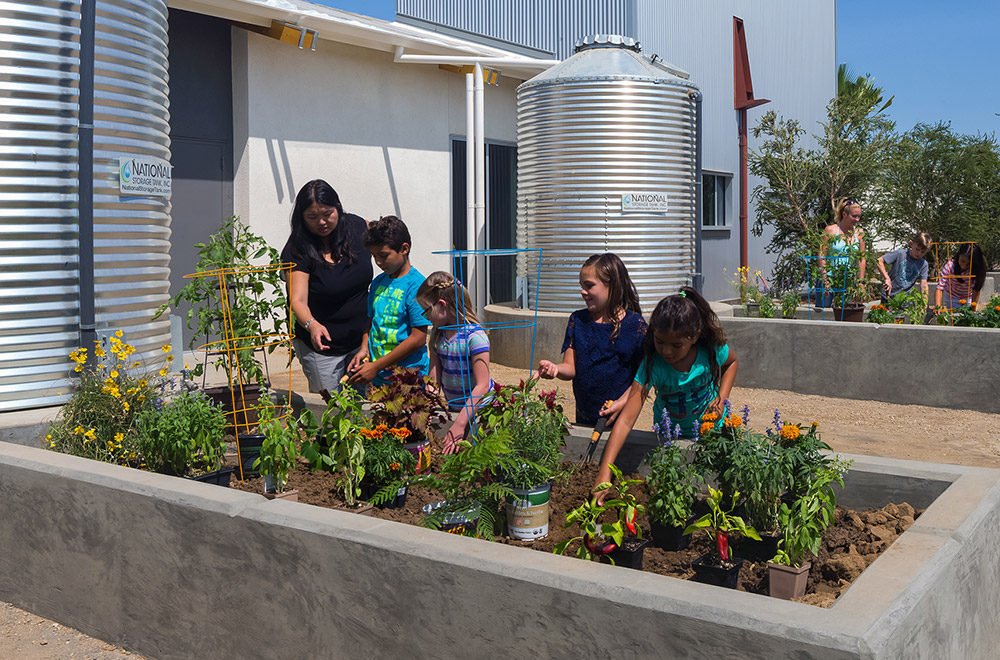HMC was presented with two Sustainable Innovation Awards from the USGBC LA for the South Wing Addition at Providence Holy Cross Medical Center and the Polytechnic School Phase III North Campus. The awards program affirms a project team’s commitment to a sustainable built environment. Unlike standardized LEED rating systems, the Sustainable Innovation Awards evaluate merit based upon sustainable strategies that demonstrate exemplary performance by going above and beyond LEED credit achievement.
Providence Holy Cross Medical Center’s (PHCMC) new patient care wing provides 138 patient beds, a Women’s Pavilion, 12-bed ICU, gastroenterology lab, surgery department, and a chapel. Planning for the four-story addition began nearly a decade ago when the LEED rating system was in its infancy and a goal to achieve LEED Certified was set. However, through the commitment of the hospital and the project team, the initial goal was ultimately exceeded, making PHCMC the first LEED Silver hospital in Southern California and one of the few in the nation.
In addition, the project team and medical campus leadership strategically developed and documented programs that have been discussed and/or implemented throughout the campus. These innovations include: installing 24 public electric vehicle charging stations, reusable BPA-free water bottle distribution and refilling stations removing 600 plastic bottles from the daily waste stream, an Annual Earth Week for employees and community to educate on aspects of living a healthy lifestyle, green cleaning program, composting program removing 13 yards (2 tons) from the monthly waste stream, and more.
The North Campus project at Polytechnic School provides innovation in the Energy & Atmosphere category through the construction of a new central plant. The new central plant provides energy to the new buildings as well as to the existing campus, which was retrofitted to receive the same energy savings. Two historic buildings designed by Myron Hunt and Gordon Kaufman were relocated and retrofitted to receive energy from the central plant. They serve as energy saving models to the other historic buildings on campus.



